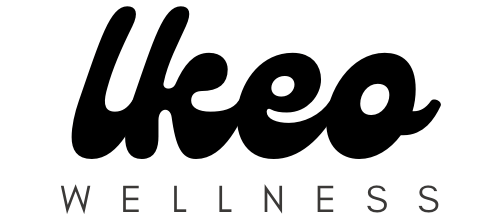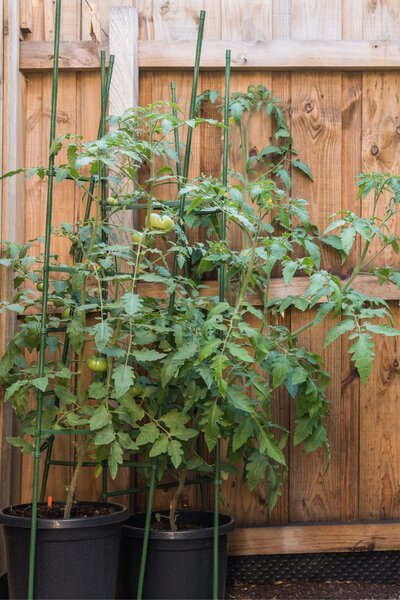What You Should Know About Microplastics
Microplastics have become a growing concern, and their impact on human health and the environment is more alarming than ever. Recent studies have found traces of these tiny particles in our lungs and bloodstream, raising serious questions about possible health concerns. From cancer risks to immune system disruptions and reproductive health issues, the potential consequences are hard to ignore.
When I came across a study showing just how much microplastic and nanoplastic are found in popular bottled water brands. I made a simple decision to stop buying bottled water for my family and to reduce my plastic use as much as possible. Beyond the health risks, microplastics are also polluting our waterways, harming marine life, and contributing to environmental degradation. It’s clear we need to make more conscious choices—not just for our health, but for the future of our planet and the generations to come. Reducing our reliance on single-use plastics is a small but essential step toward creating a healthier world for everyone.
What is Microplastic?
Microplastics are minuscule pieces of plastic that are so tiny they can’t be easily seen without a microscope. Microplastics, which are smaller than 5 millimeters can originate from the breakdown of plastic. Nanoplastics are even smaller, measuring less than 0.001 millimeters. Despite their size, nano and microplastics pose environmental and health risks as they can be ingested by animals and humans, accumulate in ecosystems, and enter the food chain.
Microplastics enter the human body through various pathways
Our Food and Water
One of the primary ways humans are exposed to microplastics is through the consumption of contaminated food and water. Microplastics can accumulate in our waterways like oceans, rivers, and lakes. The particles can be too small to be filtered out by water filtration plants and end up in our drinking water. The litter in our aquatic environments is also ingested by marine organisms such as fish, shellfish, and plankton. When humans consume seafood or water with microplastics in them, these particles can be absorbed in the gastrointestinal tract and enter the bloodstream. Water pollution is not the only way microplastics get into our food, though. Polluted soils containing microplastic particles can travel through the root systems of plants. Microplastics can be found in fruits, vegetables, and crops. When this is consumed by livestock, it enters their bodies, meaning microplastics can be found in meat and dairy as well.
Single Use Plastic
Plastic packaging materials and utensils used in food preparation and storage can leach microplastics into food and beverages. Recent studies have unveiled the unsettling truth about how much nanoplastic is in plastic water bottles. Over time, repeated contact with plastic containers and utensils can lead to the transfer of microplastics to food and water increasing the likelihood of ingestion.

Personal Care Products
Personal care products like cosmetics, exfoliants, and lotions may contain microbeads or microplastic additives that can be absorbed through our skin when we use them. Even disposable period products contribute to pollution and can have negative health effects, raising serious concerns for many women. I know I’ve started questioning these products more after reading some of the alarming studies out there. The good news is that we have the power to choose better alternatives—and many countries have already banned microbeads, with some companies voluntarily phasing them out. By becoming more informed, we can make smarter, healthier choices for ourselves and the planet.
Inhalation Exposure
Unfortunately, these particles can even become Airborne in some environments. While the health effects of microplastic inhalation are still being researched, emerging evidence suggests potential respiratory and systemic impacts.
Ways to Detox Microplastics in your Home and Body
Now that we’ve covered how plastic makes its way into our bodies, let’s talk about how to avoid and detox it. Completely avoiding exposure may seem like an impossible task, and while you may not be able to fully eliminate microplastics from your body, you can take steps to reduce your intake and support your body’s natural detoxification processes. Small, consistent changes can make a big difference in minimizing long-term exposure.
Eat Mindfully
Consume whole organic foods (whenever possible) and minimize the consumption of processed and packaged food. Our fruit and vegetables don’t always need to be wrapped in plastic! Eating a balanced diet rich in whole, nutrient-dense foods, staying hydrated, and maintaining a healthy lifestyle are key components of supporting your body’s natural detoxification mechanisms.
Here’s a list of foods to support the body’s natural detoxification processes:
- Lemon
- Garlic
- Ginger
- Turmeric
- Cruciferous Vegetables
- Leafy Greens
- Berries
- Beets
- Avocado
- Whole Grains

It’s essential to remember that detoxification is a complex process involving multiple organs and systems in the body, and no single food or ingredient can “detox” your body on its own. For specific nutritional information and the efficacy of food in detoxifying the body, it’s always a good idea to consult a qualified healthcare professional or a registered dietitian. They can offer personalized advice based on your health status, dietary preferences, and any specific concerns you may have.
Choose Good Quality Clothing
Opt for clothing made from natural fibers such as cotton, wool, and linen, which shed fewer microfibers compared to synthetic materials like polyester and nylon. Most clothing will have a tag on the inside with the fabric type and when shopping online it should always be listed. Another tip when online shopping is to use the filter tool to select the fabric type you want or search for example “organic cotton” and see what comes up.
Filter Your Water
Invest in a high-quality water filtration system to remove microplastics and other contaminants from your drinking water. I purchased the ClearlyFiltered water pitcher a few months ago it makes my tap water go from having a yellowish tint to being clear and tasting very plain (as water should). I like it and it also has some great reviews from other people.
Please note: This post contains affiliate links. If you make a purchase through these links, we may earn a commission at no extra cost to you.
Here a some different types of water filtrations systems available:
Filtered Water Pitcher: Designed for use with municipal (or tap) water. This filter targets 365+ contaminants including Microplastics, Fluoride, Lead, BPA.
Reverse Osmosis System Countertop: This countertop reverse osmosis system can reduce chemicals such as vinyl chloride, ethylhexyl acrylate, according to the reverse osmosis membrane technical manual. It can also reduce radium and radioactive substances.
Whole House Water Filtration System: Get high-quality water from every tap in your home. Designed to reduce contaminants like heavy metals, chlorine, and scale, this 3-stage filtration system improves water quality for better taste, odor-free water, and longer-lasting appliances.
Eco-friendly Home Alternatives.
You can replace plastic wrap with reusable beeswax wraps, switch plastic food storage containers for glass or stainless steel, and opt for reusable cotton cloths or Swedish dishcloths instead of paper towels wrapped in plastic. These small, sustainable changes not only cut down on plastic waste but also help create a healthier, non-toxic home environment. If you’re looking for more ideas, check out my full blog post on non-toxic home swaps for even more tips and product recommendations!
Microplastics have become a part of our everyday lives, showing up in places we never expected and reminding us how important it is to take care of the environment. This pollution harms not just the planet but our health, making it clear that we can’t afford to ignore the problem any longer. However, we don’t have to feel powerless. By raising awareness, choosing more sustainable products, and making small but meaningful changes in our daily lives, we can help reduce the spread of microplastics. It’s about protecting not only ourselves but also ensuring a healthier, safer world for our children and future generations. Together, our choices matter, and they can make a lasting difference.






